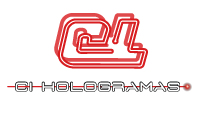Perspectum Diagnostics Showcases Quantitative MR-Based Biomarkers for Liver and Hepatobiliary Health at RSNA
CHICAGO, Nov. 25, 2018 /PRNewswire/ -- Perspectum Diagnostics is showcasing the latest version of LiverMultiScan and its newest product, MRCP+, at the 104th Annual Radiological Society of North America (RSNA) meeting, November 25-30, 2018 (South Hall #3975). The company is hosting two reading rooms to demonstrate the latest quantitative biomarkers for liver and hepatobiliary disorders.
QIRR (011) shows the use of multiparametric MRI, the technology underpinning LiverMultiScan, to quantitively analyse liver tissue. This latest version of this technology is slated for release early next year, which will enable radiologists to have access to state-of-the-art, PDFF-based method for hepatic fat quantification, LiverMultiScan IDEAL (LMS IDEAL). Additional features include machine learning-based, automatic segmentation of cT1 and PDFF parametric maps of the liver parenchyma, generated by Perspectum's deep learning algorithms based on initial work published by Irving et al (2017). These new additions to LiverMultiScan, which originally received FDA clearance in 2015, will be accessible on more field strengths across major scanner manufacturers (including GE 3T).
The IDEAL method is shown to be less susceptible to fat-water swaps and image artifacts than the DIXON three-point method when quantifying liver fat. Building on this, recent data released by Hutton et al (2018) demonstrated excellent agreement of LMS IDEAL across vendors and field strengths across a wide range of PDFF and T2* values. This data supports the use of LMS IDEAL as a robust, quantitative biomarker for hepatic fat quantification.
Professor Scott Reeder, one of the pioneers of confounder-corrected MRI to quantify PDFF, stated, "Validation studies such as this are important and encouraging, as they show the reproducibility and standardization of approaches for MRI fat quantification using multiparametric MRI, that can be applied clinically."
In addition to its diagnostic capabilities, LiverMultiScan's cT1 metric is helping to bring NASH therapies to market. Data presented recently at AASLD 2018 provided further evidence that cT1 can be used in NASH clinical trials to assess efficacy, specifically in NASH resolution.
QIRR(012) will highlight quantitative analysis of the pancreatobiliary tract using novel MRCP-based technology, MRCP+, which is pending FDA 510(k) clearance. Although conventional MRCP is used extensively in the evaluation of biliary tree anatomy, its qualitative nature results in operator-dependent reads that are suboptimal for longitudinal assessment of biliary health. MRCP+ allows enhancement of existing MRCP images and quantitative mapping of the biliary tree, enabling identification of strictures and dilations, as well as calculation of bile duct widths and biliary tree volume. Recent research and case studies has shown the diagnostic potential of MRCP+ (AUROC 0.94) in Primary Sclerosing Cholangitis (PSC), (Woodward et al, 2018), a disease currently lacking effective biomarkers in clinical practice and trials. With a standardized protocol and quantitative central reads, MRCP+ has the potential to transform patient management and trial design for this indication.
View original content:http://www.prnewswire.com/news-releases/perspectum-diagnostics-showcases-quantitative-mr-based-biomarkers-for-liver-and-hepatobiliary-health-at-rsna-300754872.html
SOURCE Perspectum Diagnostics




